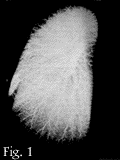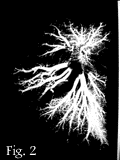

The severity of a VSD is related to its size. Small defects often close on their own with no long term harm. Large defects, however, may damage the heart or lungs.
A large VSD causes the heart to pump inefficiently by pumping oxygenated blood through the lungs again and again. When the oxygenated blood is recirculated through this heart-lung loop, instead of going to the rest of the body, the heart-lung loop becomes overloaded or congested. The congestion requires the heart to work against higher pressures. Eventually the workload becomes too great and the heart is unable to keep up with the needs of the body. This is called congestive heart failure (CHF)
Sometimes the lungs react to the higher pressures by constricting blood vessels. This is an attempt to limit the amount of blood flowing through the heart-lung loop. Over a short period of time the constriction and high pressures can cause irreversible damage to the developing vessels of an infant's lungs. This condition is called PULMONARY HYPERTENSION.


Fig. 1 is an arteriogram showing the normal lung vessels of a nine month old child. Notice the great profusion of tiny vessels that carry blood throughout the lung.
Fig. 2 is an arteriogram showing the vessels of a nine month old child with pulmonary hypertension. Notice the lack of small vessels, compared to Fig. 1. The lungs exchange carbon dioxide for oxygen at the ends of the small vessels. This child has a severely limited gas exchange capacity.
RnCeus
Homepage | Course
catalog | Discount
prices | Login | Nursing
jobs | Help
2007 ©RnCeus.com